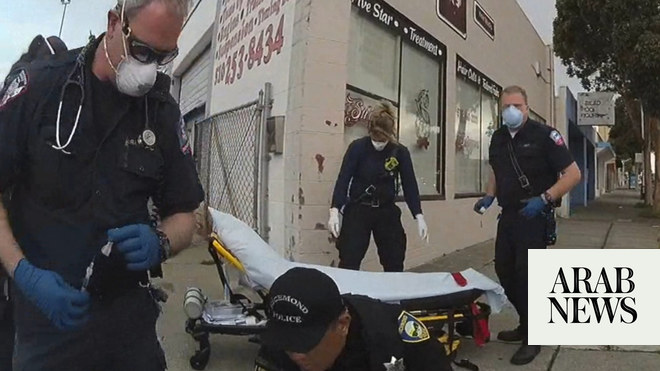
RIYADH: A Saudi doctor has warned of the dangers of smoking e-cigarettes after the US moved to ban the devices following a spate of vaping-related deaths. Dr. Shaikh Abdullah, a pediatric and adolescent specialist at King Abdul Aziz Medical City, in Riyadh, said vaping posed serious health risks including slow brain development in teenagers, lung and heart disease.
US President Donald Trump this week announced that his administration would ban flavored e-cigarettes in the wake of six deaths and 450 reported cases of lung illness tied to vaping across 33 American states. He said e-smoking was a “new problem,” especially among young people.
Although the sale and import of vaping products has been banned in Saudi Arabia since September 2015, some users in the Kingdom still reportedly manage to obtain the devices.
Heart disease
Abdullah, who works on National Guard health affairs at the medical center, said: “Smoking harms almost all organs in the body including the heart. Nearly one-third of deaths from heart disease are the result of passive smoking.
“One might be tempted to turn to e-cigarettes as a way to ease the transition from traditional cigarettes to not smoking at all. But smoking e-cigarettes is not advisable either.
“Vapor causes deposition of nicotine into the body, it is highly addictive and can raise blood pressure and spikes adrenaline which increases the heart rate and chances of heart attack,” he added.
Abdullah said that vaping could also cause slow brain development in teens and affect memory, concentration, learning, self-control and mood. In addition, e-cigarettes irritated the lungs and could lead to serious lung damage and even death, he added.
Smoking harms almost all organs in the body including the heart. Nearly one-third of deaths from heart disease are the result of passive smoking.
Dr. Shaikh Abdullah, Pediatric and adolescent specialist at King Abdul Aziz Medical City
In a statement, the US Food and Drug Administration (FDA) said: “Both the FDA and the US Centers for Disease Control and Prevention (CDC) are working tirelessly to investigate the distressing incidents of severe respiratory illness associated with use of vaping products.
“The FDA and the CDC are working closely with state and local health officials to investigate these incidents as quickly as possible, and we are committed to taking appropriate actions as a clearer picture of the facts emerges.”
Arab News’ Rawan M. Radwan, who gave up smoking for vaping, said: “I feel that vaping is more recreational than an addictive habit. I do understand the dangers of e-cigarettes, but it’s still the preferred choice.”
Conventional smoking increases the risk of stroke, heart attack, COPD (lung diseases), asthma, diabetes, and most cancers. E-cigarettes are often considered to be effective in helping conventional smokers to quit.
However, the results of a 2013 clinical trial published in the Lancet, recommended more research was urgently needed to establish the overall benefits and dangers of e-cigarettes both on users and nonusers.
Vaping is the inhaling of vapor created by an electronic cigarette, a battery-operated smoking device with cartridges filled with liquid that usually contains nicotine, flavorings and chemicals.
Although there are more than 1,000 toxic chemicals found in cigarettes, the contents of vape juices are still widely unknown.
Radwan said: “Though I am not sure about its legality in Saudi Arabia, vape juice and devices are obtainable through sellers on the internet. Some stores provide vape salts and juices on customer request. I think vaping is popular because cigarettes and shishas are out.” She added that shisha tobacco cost SR100 ($27) or more per kilo, making e-cigarettes the more affordable choice. In the US, some individuals were placed in induced comas after smoking home-made vaping devices.
Trump met with top health officials at the White House to discuss ways to keep the products away from teenagers.
“We can’t allow people to get sick. And we can’t have our kids be so affected,” the New York Times quoted the president as saying.
A study published in the Journal of the American College of Cardiology, in May this year, found that e-cigarette flavor can damage cells lining blood vessels and in turn damage the heart.
What does vaping-related illness look like?
The following is a look at the illness and how US doctors are treating it.
PATIENT PROFILE: Most of the US cases so far have involved young men under the age of 20 who were otherwise healthy. All reported vaping within 90 days prior to developing symptoms, and many had vaped within a week of feeling sick.
Patients experienced symptoms for several days to several weeks before being admitted to the hospital.
SYMPTOMS: Nearly all patients involved in the outbreak so far have reported respiratory issues, including a dry, or unproductive, cough that does not bring up mucus, shortness of breath and chest pain that worsened with deep breathing.
About 80 percent had gastrointestinal symptoms, including nausea, vomiting or diarrhea. Those symptoms often appeared before patients started having trouble breathing.
Most also had general symptoms of illness, including fever, chills, weight loss and fatigue.
Chest X-rays and CT scans revealed shadows or abnormalities in both lungs in all of the patients, which has become a defining characteristic of the illness.
An analysis of lung cells from five patients in North Carolina turned up pockets of oily deposits within immune system cells called macrophages.
Experts have not yet determined whether these are an artifact of the immune system’s attempt at removing vaping oils — a foreign substance — from the lungs, or if they are central to the disease process itself.
TREATMENT: Many of the patients had sought treatment before going to a hospital. Nearly half were initially treated with antibiotics either before going to the hospital or after being hospitalized, but patients failed to respond.
Ultimately, nearly all of the patients were hospitalized, with more than half admitted to an intensive care unit suffering from respiratory failure.
Most patients recovered after six days of treatment. Many responded to steroids, which reduced inflammation in the lungs. Doctors also believe time in the hospital that patients spent on a ventilator and not vaping helped the lungs heal.
Because no infectious cause has been found, the CDC believes the illnesses are the result of chemical injury to the lungs. It is not yet clear whether patients will have any lasting damage.
SOURCES: The New England Journal of Medicine and the CDC’s Mortality and Morbidity Weekly Report












